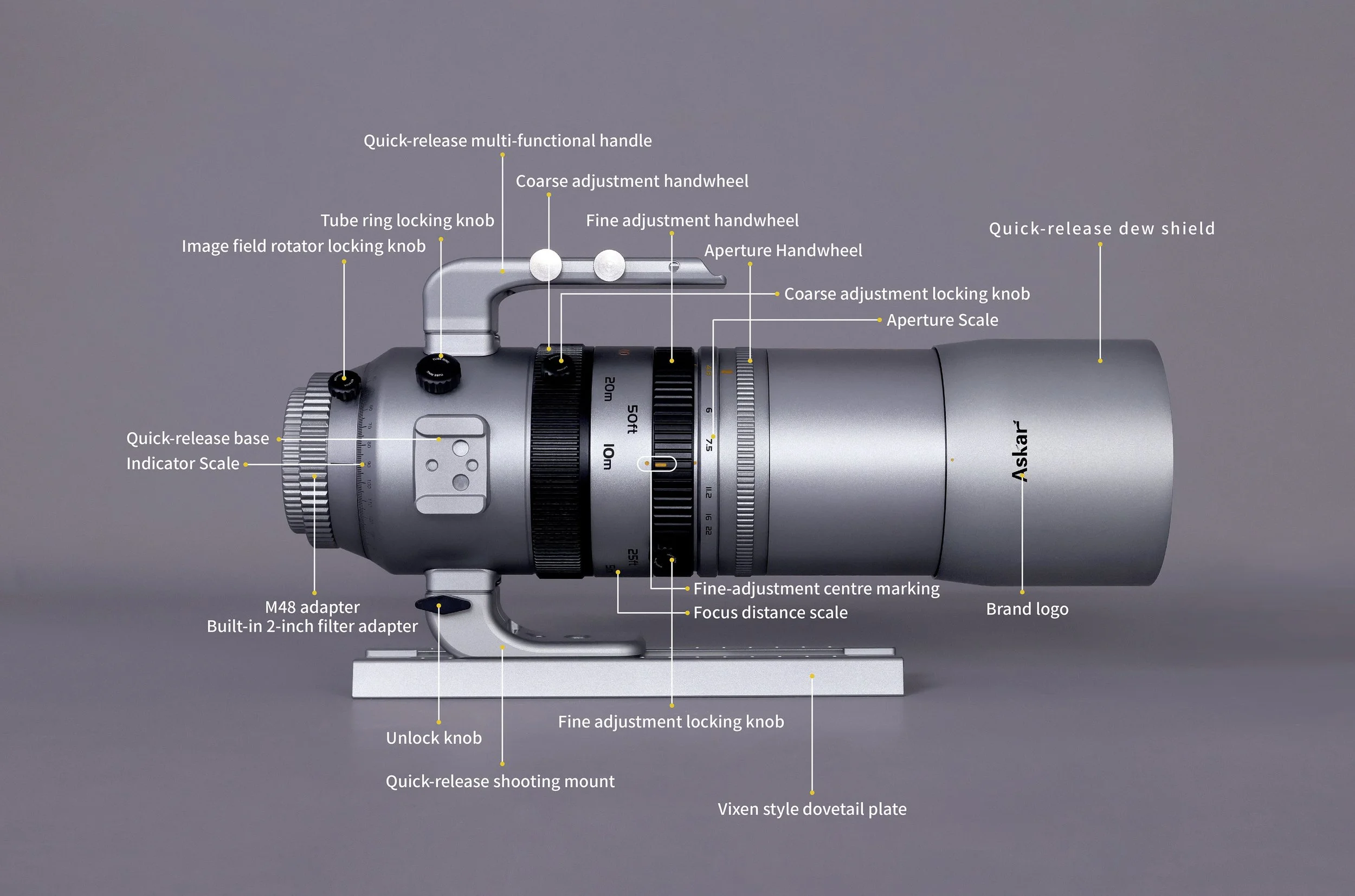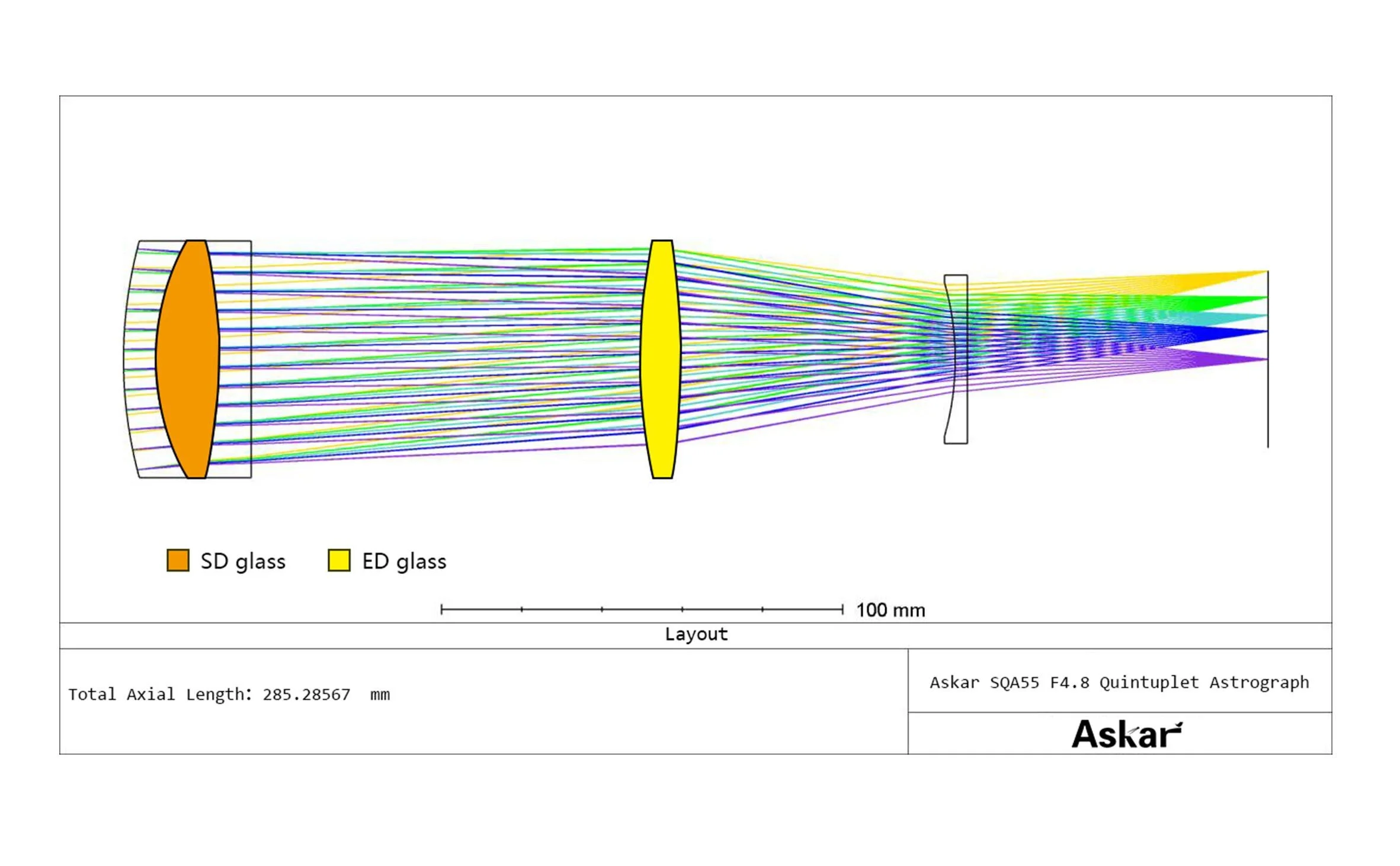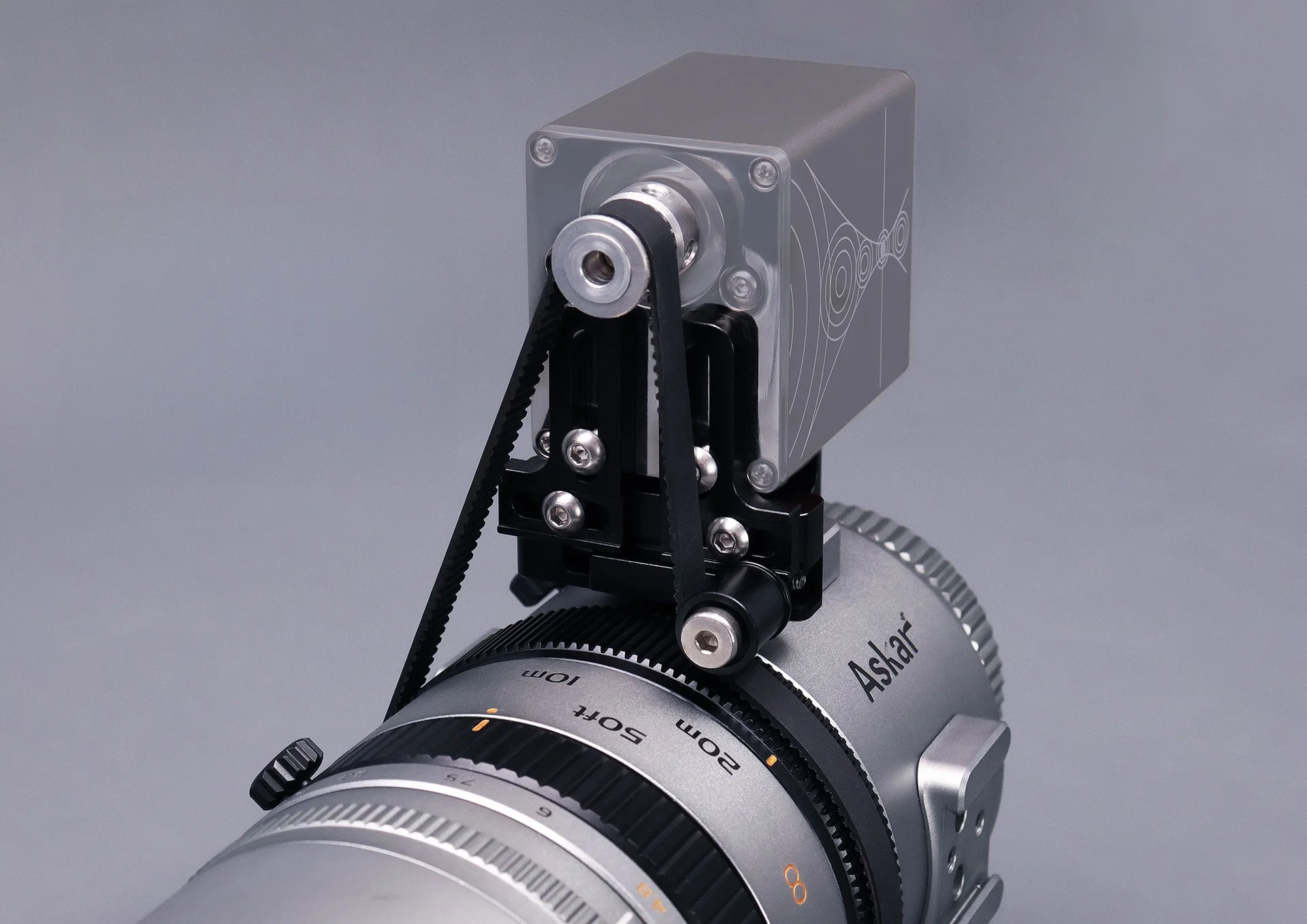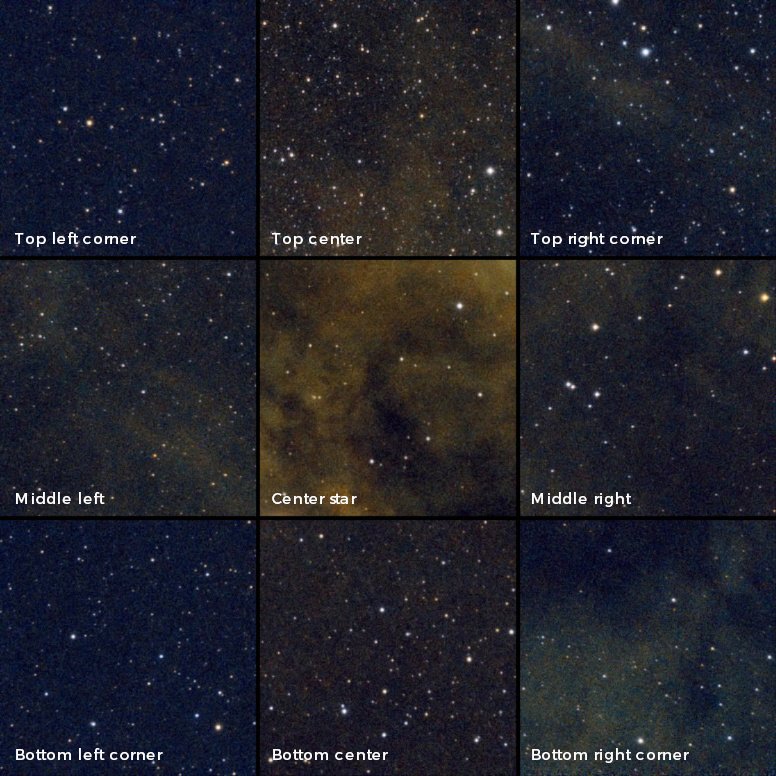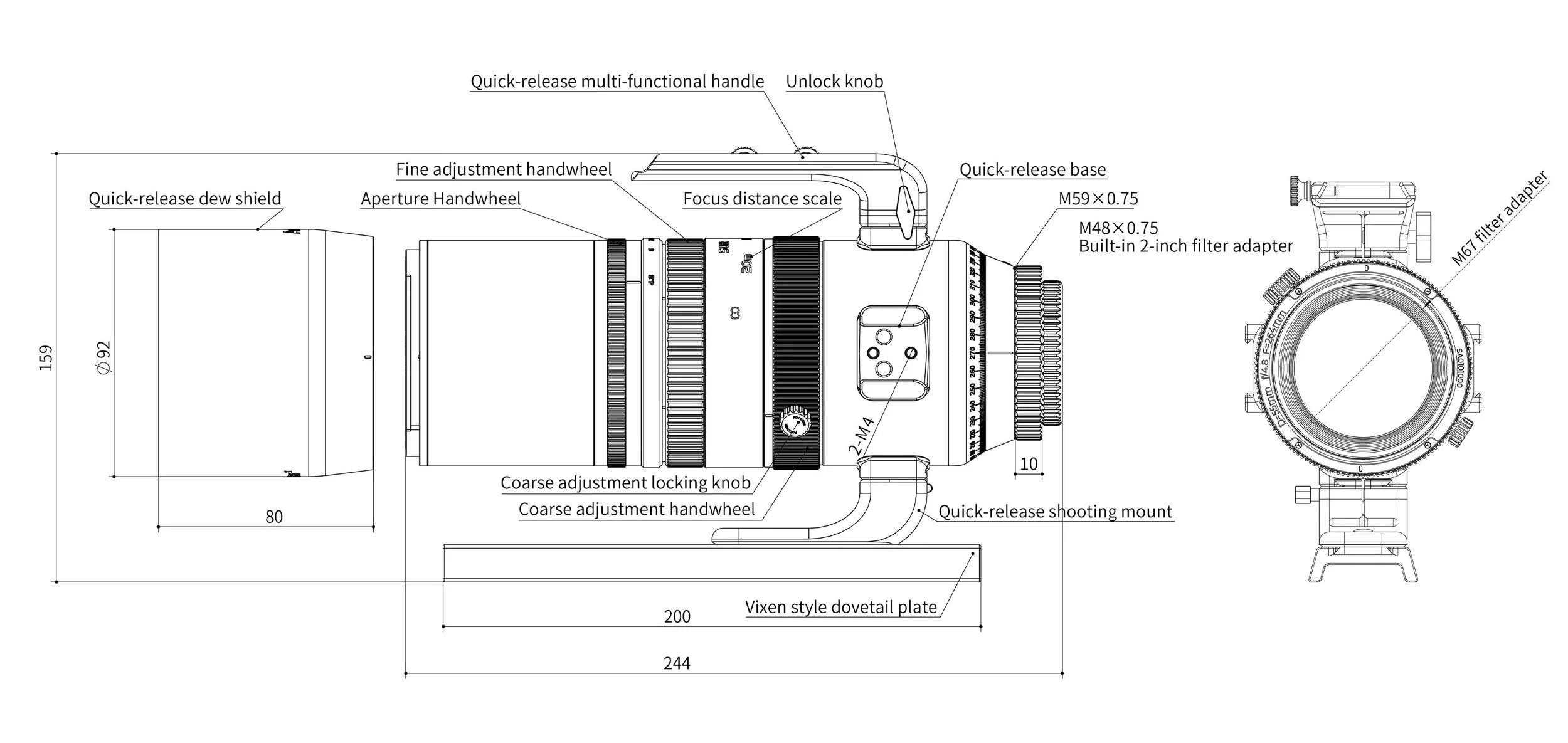Askar SQA55: A Portable Powerhouse for Deep Sky Astrophotography
The SQA55 is a quintuplet air-spaced SD glass Petzval astrograph telescope.
For astrophotographers looking to balance portability, optical performance, and versatility, the Askar SQA55 delivers a well-thought-out solution. This compact, wide-field quintuplet refractor promises sharp stars across a generously flat field (no flattener required) and is particularly appealing to those using either astronomy dedicated cameras or DSLR/mirrorless cameras. We spent several clear nights with the SQA55, and here's what we discovered.
First Impressions & Build Quality
The SQA55 works straight out of the box, thanks to many accessories that come with the telescope.
Straight out of the box, the Askar SQA55 feels like a serious piece of gear. The body is machined from high quality aluminium, with a sleek grey finish that matches the aesthetics of other scopes in the Askar’s SQA lineup. At just over 2kg, lightweight enough to travel with, yet solid enough to inspire durability. The detachable dew shield does what it’s supposed to achieve, and when the lens hood is not in use, it can be stored in reverse to reduce the overall volume.
The telescope ships with a solid dual-ring mounting system, a Vixen-style dovetail plate, and a custom-fit military-grade carrying bag. That is a very welcome inclusion for anyone planning to travel with the scope. It also includes an integrated manual rotator with clear degree markings, ideal for framing wide-field targets with precision.
The SQA55 is a quintuplet air-spaced lens design.
Optical Performance
The SQA55 features a quintuplet air-spaced design: two elements in the main objective group (one of which is ED and the other one SD glass). With a self-flattened design, there is no need to calculate specific back focus. Also, no additional flattener is needed as the scope already provides a flat field of view.
In our test images, stars were sharp from corner to corner, even on full-frame sensors. The stars seem tight and well-shaped, and we saw no obvious flaws when pointing the telescope to very bright stars. SharpStar claim that the central star point has an RMS radius of less than 2.5 um, and the star point at the corner is less than 4 um which is quite impressive.
With a focal length of 264mm (f/4.8), this scope hits a sweet spot for wide-field deep-sky targets. Think the Rosette, North America, or California Nebula. Those using APS-C or micro four-thirds cameras will appreciate how punchy and clean the star fields appear, and full-frame users will find the field flatness to be surprisingly consistent. Thanks to its variable apaerture that ranges from f/4.8 all the way to f/22, this telescope can also be used as a lens for widelife photography.
Chromatic aberration? Thanks to the ED glass element, colour fringing is kept to a minimum, even on bright stars.
Focuser & Imaging Experience
The SQA55 AFkit can be purchased separately and used with most electronic focusers.
When it comes to the back of the telescope, it’s more than capable of handling a filter wheel, cooled camera, and guide scope without slipping. We tested it with a ZWO ASI6200MC Pro and a 7-position filter wheel: rock solid.
Its two focusing ring system allows for fine and corse adjustments. For those wanting to automate their imaging workflow by using an eletronic focuser, the synchronous belt that will allow you to use an eletronic focuser is optional and must be purchased separately. It takes a few minutes to instal the belt and attach your electronic focuser using one of the 3 belts included in the AFkit. This kit provides compatibility with most major electronic focusers.
The manual rotator has engraved markings which is a thoughtful addition. At the back of the rotator you can screw in your 2” filters. The lens tube and 360° rotator both have independent locking screws, meaning that the high-precision rotator can be rotated independently.
NGC 1499 by Zhiyuan Wan, captured with Askar SQA55 telescope
Real-World Imaging Results
We tested the Askar SQA55 under both Bortle 3 and 5 skies, and it held up brilliantly. In darker skies, it excelled at pulling out faint nebulosity at f/4.8. In more light-polluted conditions, it still delivered excellent contrast and detail with the help of a narrowband filter. To find out more on deep sky imaging in any condition, read our article about doing astrophotography from anywhere.
Images were free from distortion, and guiding was straightforward thanks to the fact that we could mount our guidescope on top handle with Vixen mount. This makes it an excellent pairing with compact equatorial mounts like the ZWO AM5N (see our review of the AM5N here).
You can also purchase additional Quick-Release Handle Bars specifically designed for the SQA55 to mount more accessories such as ASI Air, Power Box etc.
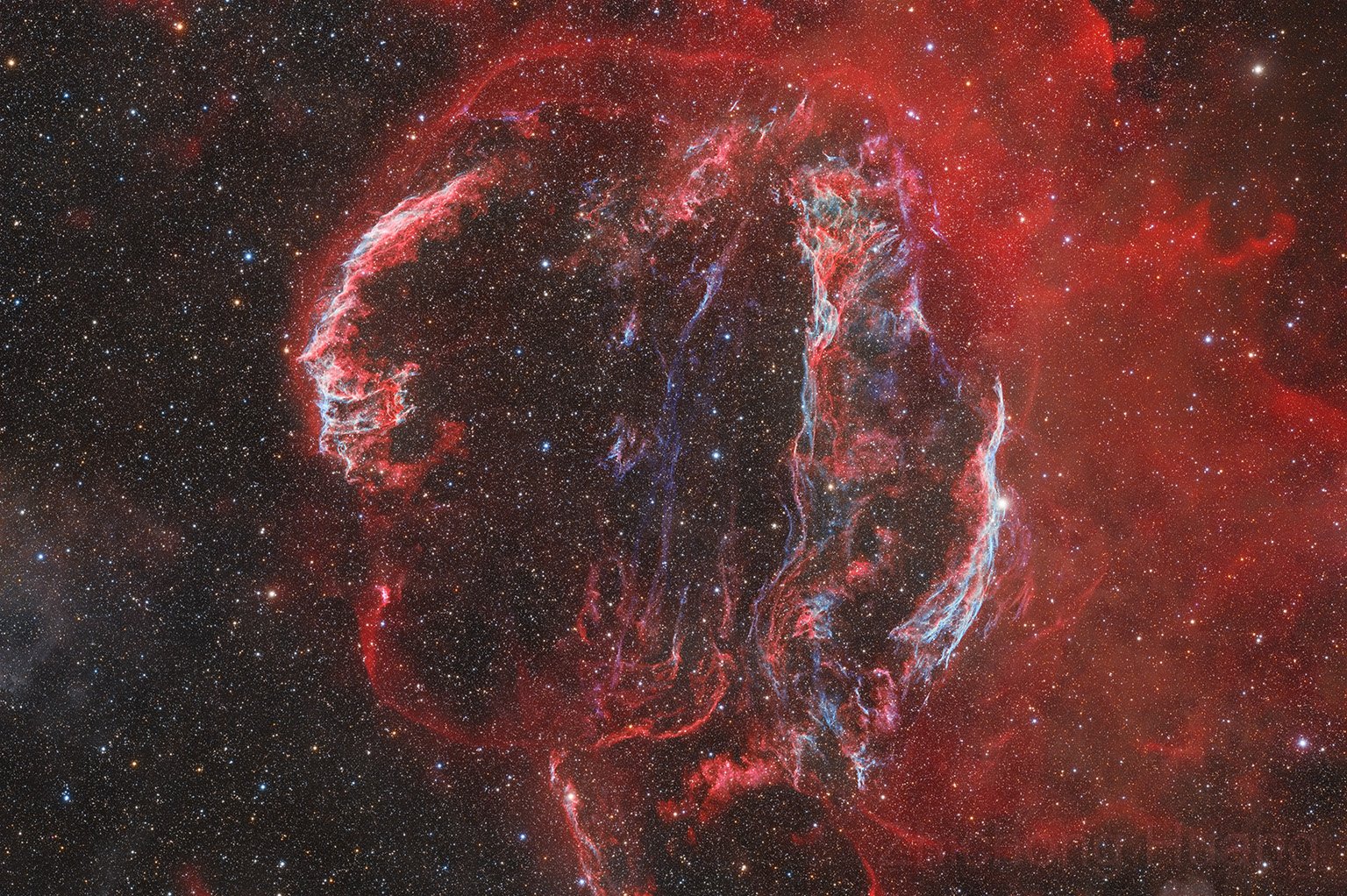



Askar SQA55 performs incredibly well with full frame cameras.
How It Compares: Redcat 51 and SVBONY SV555
Astrophotographers shopping for a small refractor have likely considered the William Optics Redcat 51 or the SVBONY SV555. Here's how the SQA55 stacks up:
Redcat 51: At a similar price point and with a 250mm focal length and f/4.9 speed, the Redcat 51 by William Optics is a worthy competitor. However, its 4-Element Petzval design and can suffer from field curvature with larger sensors. The SQA55's internal corrector/flatter make it a better choice for full-frame astrophotographers.
SVBONY SV555: Positioned as a budget option, the SV555 offers decent performance for the price, but lacks the optical refinement of the SQA55. The SQA55's build quality, flat field of view across the frame, and premium optics put it in a different league.
If you’re looking for top-tier performance in a small package and plan to shoot with a full-frame camera, the SQA55 seems to have the edge in terms of optical performance and the fact that it has been designed with astrophotography in mind.
Things to love about Askar SQA55:
Built-in corrector. No flattener required.
Lightweight, travel-friendly, and comes with a carry bag.
Edge-to-edge sharpness on full-frame sensors.
Excellent build quality and finish.
Smooth manual rotator for easy framing, with a 360° scale markings.
Compatible with smaller tracking mounts such as the ZWO AM3 and Sky-Watcher Star Adventurer GTi.
Things that could be improved:
At the time of this review, the SQA55 retails for 795 USD. Whilst it is in line with other similar telescopes such as the Redcat 51, it would be nice to see sales and promotions in the future to make it more affordable.
The SQA55 comes with a military-grade waterproof two-storied hand-carrying case with room for accessories.
Final Thoughts
The Askar SQA55 hits a niche that many deep-sky astrophotographers have been hoping for: a well-corrected, compact refractor that is a perfect travel companion. It can also be used in daytime for nature and widelife photography. It’s beautifully crafted, versatile, and ready to deliver high-quality images straight out of the box. Whether you're building a mobile rig or looking for a secondary scope to complement your larger setup, the SQA55 is a compelling choice.
Specifications at a Glance
Optical Design: Quintuplet petzval APO
Aperture: 55mm
Focal Length: 264mm
Focal Ratio: f/4.8
Image Circle: 44mm
Back Focus: Not applicable
Focuser: Two ring system with fine and coarse adjustments
Weight: OTA 1.84kg
Accessories: Mounting rings, Vixen dovetail, carry bag, integrated rotator and lenshood/dew shield.
About Sharpstar Optics:
Jiaxing Sharpstar Optical Instrument Co. Ltd. is the company behind the SQA55 telescope. It was founded in 2000 in Jiaxing, Zhejiang, China. They are specialised in research, development and production of astronomy instruments.
Sharpstar brand is divided into refractors and reflectors as well as mounts and tripods. And under the Askar brand there are SQA series, PHQ series, FRA series, APO series, FMA series, V series, F series as well as filters and accessories.


